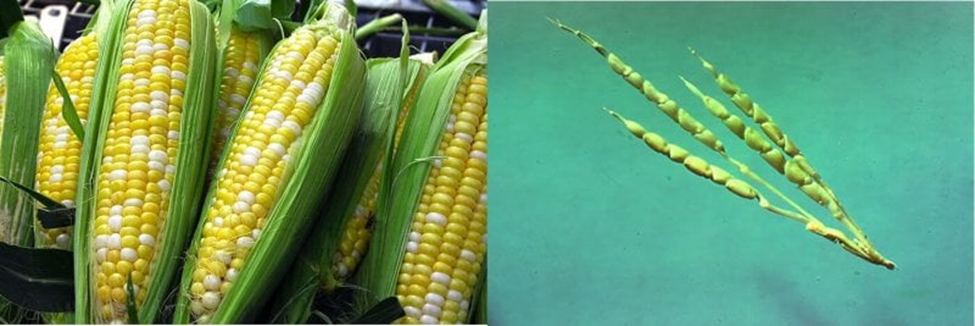The use of molecular techniques to create genetically engineered (GE) crops has now returned to the over-regulation of a bygone era.
Last December, in National Family Farm Coalition v. Vilsack, U.S. District Judge for the Northern District of California James Donato set agricultural innovation back decades. He issued a startling summary judgment that reinstates past errors in the regulation of new plant varieties and flies in the face not only of decades of experimentation, application, and deliberation, but also of common sense.
In short, it is one of the most wrongheaded and judicially embarrassing agricultural and food policy decisions in decades.
The unscientific over-regulation of GE crops dates back almost 40 years. In 2020, however, enlightened regulation in the form of the Sustainable, Ecological, Consistent, Uniform, Responsible, Efficient (SECURE) rule represented progress by moving to a more scientific approach to regulation.
Docket and regulatory history
Judge Donato's ruling is the latest chapter in the ongoing battle over the role of GE crops in modern agriculture. In 2020, a coalition of crop biotechnology rejectionist groups sued to set aside the SECURE rule that provided a scientific and risk-based process to evaluate the emerging generation of GE crops. For decades, such crops, often dubbed "genetically modified organisms," or "GMOs" by critics, had to undergo a multi-year testing and evaluation process that could cost a hundred million dollars or more.
The old regulations were grounded in the fiction that somehow, highly precise molecular GE techniques could create harmful "Frankenfoods." The SECURE rule, issued by USDA's Animal and Plant Health Inspection Service (APHIS), shifted the trigger for regulatory oversight of new plants from a process-based focus (i.e. whether the plant was created using the newest molecular techniques) toward a product-focus (i.e., whether the plant poses risks as a "plant pest" or "noxious weed," which would then require a case-by-case review under long-standing statutes). APHIS had worked on this rule for sixteen years – 2004 to 2020.
Interestingly, in contrast to USDA's missteps and vacillation, from its initial contact with them in the 1980s, the FDA adopted —and has maintained — a focus on the characteristics of products in its regulation of human drugs and biologics developed with molecular genetic engineering. It was apparently okay to prevent and treat disease with molecular genetic engineering, but not to feed people or to protect the environment with the same technology.
Judge Donato's order vacated APHIS' 2020 regulation, the SECURE rule. He wrote that in the process of drafting it, APHIS had failed to explain adequately (1) why regulators had concluded that plants created using molecular GE techniques were not "noxious weeds" and (2) the rationale for concluding that plants created using the newest GE techniques could generally be considered as safe as conventionally-bred plants.
Can we expect a new generation of innovative plants?
Judge Donato's ruling handed a victory to reactionary, anti-science forces opposed to the use of the newest molecular GE techniques – including one called CRISPR (short for Clustered Regularly Interspaced Short Palindromic Repeats), a natural system that some bacteria use to defend themselves against invading viruses. CRISPR can identify specific DNA sequences, after which an enzyme called Cas9 allows a desired modification to be created at those sites. CRISPR was so revolutionary that its inventors were awarded the 2020 Nobel Prize in Chemistry. It is being widely used worldwide.
The settled scientific consensus is that plants created by molecular GE techniques are not different in kind, risk, or safety for humans or the environment from plants created by conventional breeding techniques — except that the modifications are more precise and predictable. For millennia, humans have continuously genetically modified, or improved, microorganisms, animals, and crop plants through selection and breeding to enhance their desirable characteristics. Sometimes, the modification of traits has been so drastic that the new varieties have been designated as new species – for example, those derived from the versatile Brassica oleracea, like broccoli, Brussels sprouts, cabbage, cauliflower, kale and kohlrabi. And teosinte is barely recognizable as the ancestor of modern corn:

Left, modern sweet corn. Right, corn's ancestor: teosinte. Credit: Rosana Prada
To accomplish desired changes in phenotype (the traits of an organism resulting from the interaction of the genotype and the environment), over time, scientists have invented increasingly sophisticated techniques, particularly since recognizing that all higher organisms have the same carrier of genetic information, the double-stranded helix of DNA.
As long ago as 1987, the National Academy of Sciences (NAS) published a white paper on GE organisms which concluded that they do not pose new risks, and that the same regulations should apply to them as to non-GE organisms. Its key conclusions included:
- The risks of GE organisms are the same as those of non-GE organisms.
- The method used to produce the organism is not as important as the product itself when deciding whether to introduce it into the environment.
- The same biological laws apply to GE organisms as to non-GE organisms.
- The product of genetic modification and selection be the focus of decisions about environmental introduction, not the process used to create it.
Two years later, a landmark 1989 analysis from the National Research Council (NRC) went much further, emphasizing that
modern molecular techniques are more precise, circumscribed, and predictable than other methods. They make it possible to introduce pieces of DNA, consisting of either single or multiple genes that can be defined in function and even in nucleotide sequence. With classic techniques of gene transfer, a variable number of genes can be transferred... and we cannot always predict the phenotypic expression that will result. With organisms modified by molecular methods, we are in a better, if not perfect, position to predict the phenotypic expression. (Emphasis added.)
We wonder whether the NAS and NRC analyses were provided to Judge Donato.
New legal landscape
Judge Donato's decision dictates a return to unscientific over-regulation; to excessive burdens in terms of costs and time; and to the obstruction of technological innovation that could advance knowledge and human welfare, and benefit the environment. He either ignored or was unaware that making the trigger for regulation the process by which a new plant was created instead of the risk-related characteristics of the plant violates a basic tenet of regulation – namely, that the degree of oversight should be commensurate with the perceived risk.
Over the years, USDA has tried (albeit painfully slowly) to move from an ossified process-focused regulatory approach to a more product-based one — a progressive, science-based evolution – but that has now been torpedoed by Judge Donato. If it stands, his opinion will encourage distrust, misinformation, and obscurantism about science and agriculture, and will discourage innovation. We can only hope it will be overturned on appeal or that APHIS will quickly draft a new regulation that focuses on product over process.
Note: A previous version of this article was published by the Genetic Literacy Project.
Drew Kershen is a professor emeritus of agricultural law at the University of Oklahoma College of Law.
Henry Miller, a physician and molecular biologist, is the Glenn Swogger Distinguished Fellow at the American Council on Science and Health. He was the founding director of the FDA's Office of Biotechnology.




